Conveyor System Automation in Malaysia | Smart Material Handling by DNC Automation
In today’s fast-paced manufacturing and logistics environment, conveyor system automation has become a key driver of operational efficiency. By replacing manual material handling with intelligent, automated conveyor lines, businesses can achieve smoother product flow, greater accuracy, and higher productivity. As one of Malaysia’s leading automation solution providers, DNC Automation delivers tailored conveyor systems that integrate seamlessly with robotics, WMS/WCS, and Industry 4.0 technologies — helping factories move smarter, faster, and safer.
What Is Conveyor System Automation and Why Does It Matter?
In today’s fast-paced manufacturing landscape, efficiency and precision are no longer optional—they are essential. One of the key technologies driving this transformation is conveyor system automation.
Automated conveyor systems play a vital role in modern production lines by streamlining material flow, reducing manual handling, and ensuring consistent product movement across different stages of manufacturing. Instead of relying on traditional, labor-intensive conveyors, automation integrates motors, sensors, PLCs, and smart control systems to optimize throughput and minimize errors.
How Does an Automated Conveyor System Work?
An automated conveyor system combines mechanical components, control technologies, and intelligent software to move materials efficiently throughout a factory or warehouse. Below is a breakdown of its key components and how the system operates step by step.
Step 1: Product Detection and Loading
The process begins when products or materials enter the conveyor line. Using barcode scanners, vision systems, or weight sensors, the system identifies and registers each item.
Automated loaders or robotic arms may place goods onto the conveyor, ensuring correct orientation and spacing for downstream processes.
Step 2: Controlled Movement via Motors and Drives
Once detected, items are transported using motor-driven belts, rollers, or chains. Variable Frequency Drives (VFDs) regulate motor speed and torque, allowing precise control of movement according to production demand.
This control prevents jams or collisions while maintaining an optimal flow rate along the entire line.
Step 3: Smart Routing, Sorting, and Positioning
At key points, photoelectric sensors, RFID readers, or PLC logic determine where each item should go.
For example, items can be automatically diverted to different conveyors for packing, inspection, or labeling using pneumatic pushers or diverter arms.
In more advanced systems, robotic picking stations or vision-guided sorting units handle complex or varied products.
Step 4: Integration with Factory or Warehouse Systems
Modern conveyor systems are not standalone — they are part of a connected ecosystem.
Through WMS (Warehouse Management System), WCS (Warehouse Control System), or MES (Manufacturing Execution System) integration, conveyors communicate with other automation layers such as AGVs, AS/RS, or robotic work cells.
This integration allows real-time synchronization, production tracking, and inventory accuracy across the facility.
Step 5: Real-Time Monitoring and System Feedback
Operators can monitor performance using HMI touchscreens or cloud-based dashboards.
Data from IoT sensors — such as motor temperature, vibration, or belt tension — is analyzed to detect early warning signs of wear or inefficiency.
This predictive maintenance capability reduces downtime and extends equipment lifespan.
Step 6: Unloading, Transfer, and End-of-Line Automation
At the end of the process, products are automatically unloaded, palletized, or transferred to packaging or dispatch zones.
Integration with robotic palletizers, automated wrappers, or weighing stations ensures a seamless, end-to-end material handling workflow.
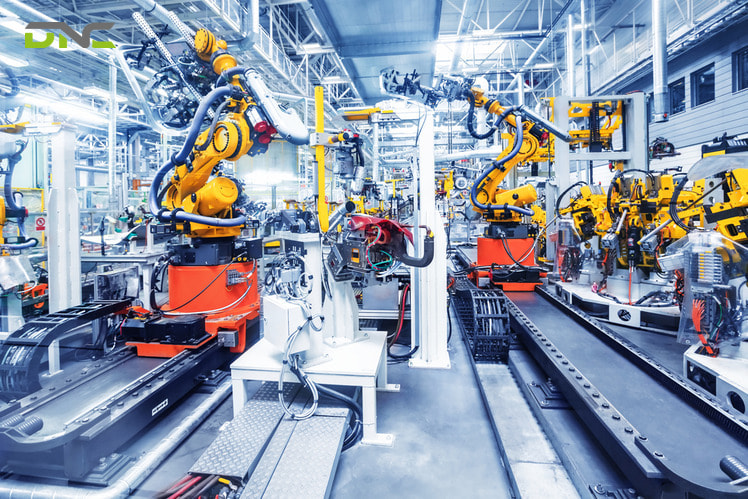
Automated Conveyor System operates step by step
What Types of Conveyor Systems Are Used in Factory Automation?
In factory automation, not all conveyor systems are built the same — each type serves a specific function depending on the product, workflow, and environment. Choosing the right conveyor is crucial for ensuring smooth material flow, efficiency, and system reliability. Below are 5 common types of conveyor systems used in automated manufacturing and warehouse operations:
Belt Conveyors
- Suitable for light to medium loads like boxes and components.
- Common in assembly, inspection, and packaging processes.
- Smooth, quiet, and energy-efficient operation.
- Can integrate with sensors and PLCs for precise product flow control.
Roller Conveyors
- Move heavy loads such as pallets, crates, and industrial parts.
- Available in powered or gravity-fed versions.
- Used in warehouses and automotive manufacturing.
- Include accumulation zones to prevent product collision and damage.
Chain Conveyors
- Utilize steel chains for moving heavy or high-temperature materials.
- Ideal for rugged environments like metal fabrication or welding lines.
- Common in automotive and machining industries.
- Provide strong durability and resistance to wear.
Modular / Flexible Conveyors
- Built from interlocking plastic modules, easy to reconfigure.
- Suitable for factories with changing layouts or mixed-product lines.
- Can handle curves, inclines, and tight spaces effectively.
- Preferred in FMCG, food & beverage, and electronics sectors.
Overhead Conveyors
- Suspended systems that move items above floor level.
- Free up ground space for workers and equipment.
- Common in painting booths, garment handling, and automotive assembly.
- Improve space utilization and workflow organization.
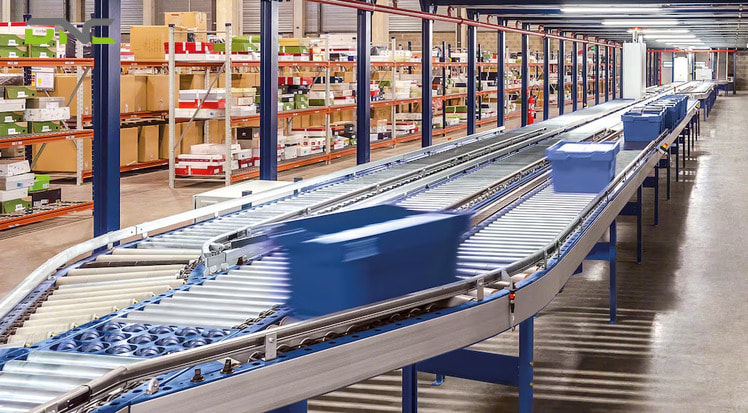
5 common types of conveyor systems used in automated manufacturing and warehouse operations
What Are the Benefits of Conveyor System Automation?
Automating your conveyor system is one of the most effective ways to enhance productivity and consistency in modern manufacturing and warehouse environments. By reducing manual handling and optimizing material flow, businesses can achieve higher throughput, fewer errors, and safer operations. Here are the key benefits of implementing conveyor system automation:
- Increased throughput and efficiency – Continuous, consistent movement of materials improves production speed and reduces idle time.
- Reduced labor dependency – Minimizes manual handling, allowing workers to focus on higher-value tasks.
- Improved accuracy and consistency – Automated conveyors ensure precise routing and handling, reducing product damage and errors.
- Enhanced workplace safety – Lowers the risk of injuries caused by repetitive lifting or heavy material handling.
- Scalability and integration – Easily expandable and compatible with robots, AGVs, and WMS/WCS systems for future upgrades.
- Lower operational costs – Reduces long-term labor and maintenance expenses while increasing energy efficiency.
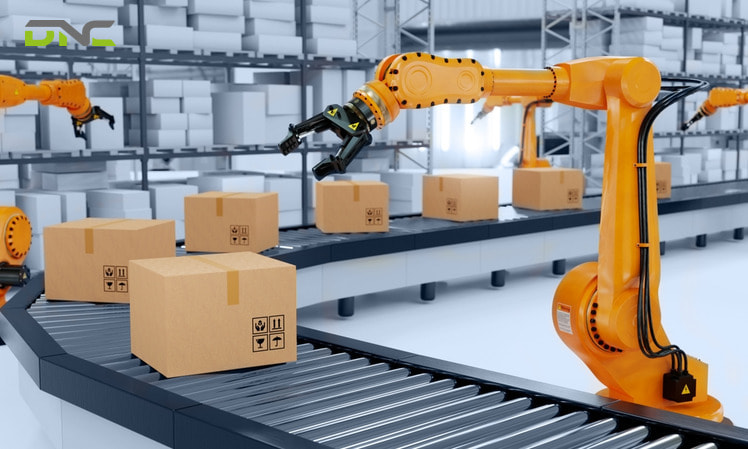
Benefits of Conveyor System Automation
What Are the Key Components and Technologies Behind Automated Conveyor Systems?
Behind every efficient conveyor automation setup lies a network of advanced control systems and smart technologies working together to ensure smooth, reliable, and energy-efficient operations. Below are 4 essential components that make modern conveyor systems function seamlessly:
- PLC and HMI: Provide centralized control and real-time monitoring, allowing operators to manage speed, direction, and product flow efficiently.
- Sensors and Actuators: Detect product position, weight, and movement, ensuring accurate routing and consistent performance.
- Frequency Inverters (VFDs): Regulate motor speeds to optimize energy consumption and extend equipment lifespan.
- Integration with WMS/WCS/MES: Enables synchronization between material handling operations and warehouse or production management systems for complete automation.
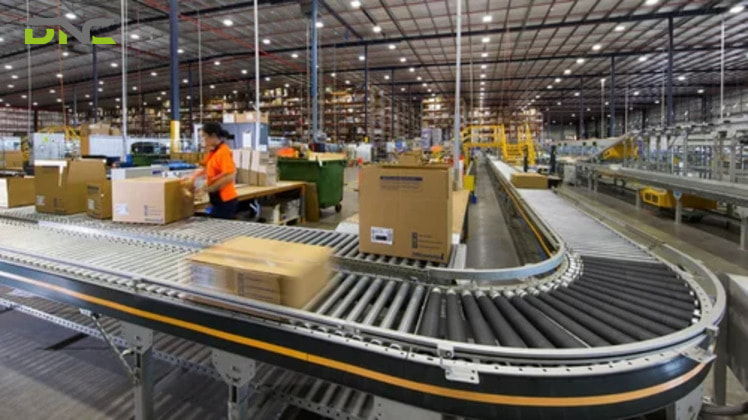
4 essential components that make modern conveyor systems
Why Should You Choose DNC Automation for Conveyor System Automation in Malaysia?
Selecting the right automation partner is crucial to achieving long-term efficiency and scalability. With a decade of experience and a proven track record in factory automation, DNC Automation delivers end-to-end conveyor solutions tailored to your business needs:
- Over 10 years of experience in Material Handling and Factory Automation.
- Custom conveyor design, from modular and flexible configurations to industry-specific systems for manufacturing, logistics, F&B, and automotive sectors.
- Smart integration with robotics, AGVs, AS/RS, and industrial sensors for seamless factory connectivity.
- Local technical support and maintenance across Malaysia, ensuring reliable after-sales service and system longevity.
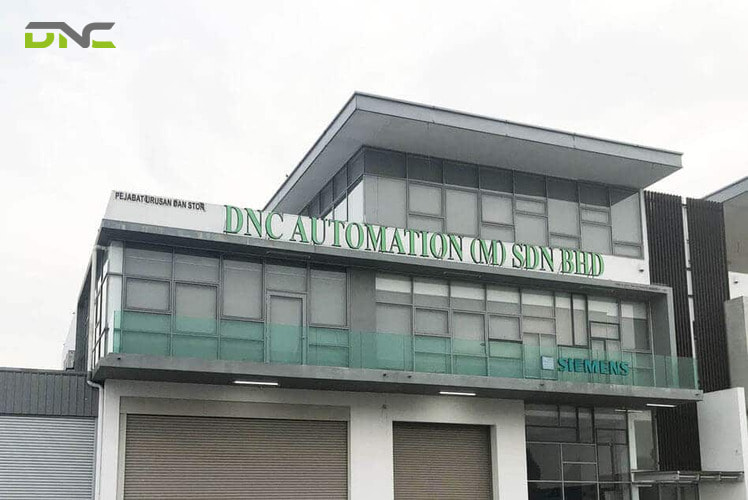
DNC Automation for Conveyor System Automation in Malaysia
FAQ — Conveyor System Automation
Below are some of the most frequently asked questions about conveyor system automation, especially from businesses in Malaysia looking to modernize their material handling operations.
- What industries benefit the most from automated conveyor systems?
Automated conveyors bring efficiency and reliability to a wide range of industries. Manufacturing plants use them for streamlined production flow; logistics and e-commerce warehouses rely on them for faster order processing; and sectors like food & beverage, pharmaceuticals, and automotive benefit from consistent product handling and improved hygiene or quality control. - Can automated conveyors integrate with robots and warehouse management systems?
Yes. Modern conveyor systems from DNC Automation are designed with flexibility in mind. They can be fully integrated with robotic arms, AGVs/AMRs, and digital control platforms such as WMS, WCS, or MES. This integration enables real-time tracking, optimized material routing, and improved coordination between various automation layers within the facility. - How long does installation and commissioning usually take?
The project duration depends on the system size, complexity, and level of integration required. A small modular conveyor line can be installed within a few weeks, while larger multi-zone or fully automated systems may take a few months, including design, setup, and testing phases. - What kind of ROI can businesses expect from conveyor automation?
Return on investment typically occurs within 1 to 3 years, depending on throughput, labor cost savings, and productivity gains. Automated conveyors significantly reduce manual handling time, minimize errors, and enable 24/7 operation — all contributing to a faster payback period. - How does DNC Automation support maintenance and system upgrades?
DNC provides comprehensive local after-sales support across Malaysia, including scheduled maintenance, system diagnostics, and software updates. Our engineering team offers remote monitoring and rapid on-site service to minimize downtime. We also ensure that spare parts and technical resources are readily available for long-term operational reliability.
- 16 views
- 0 Comment



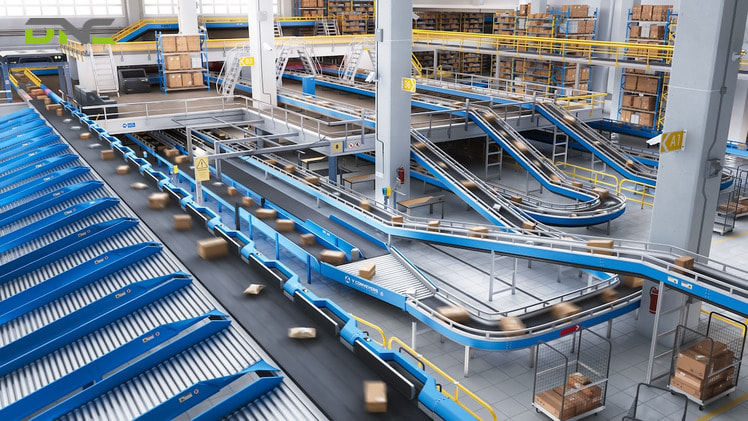
Recent Comments